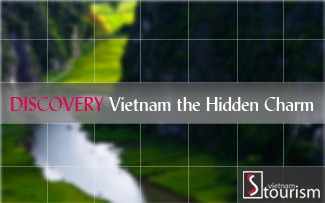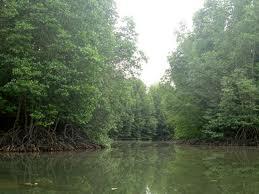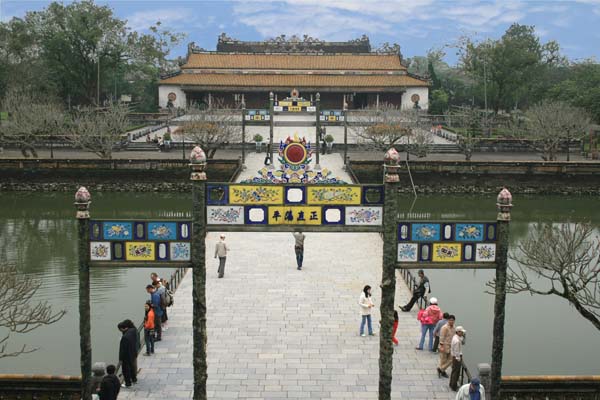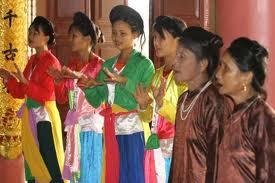The Imperial Citael of Thang Long – Ha Noi recognized world cultural heritage
Published: Tuesday, 12/06/2012, 03:52 GMT+7
Hit: 4278
The central sector of Imperial Citadel of Thang Long – Ha Noi covers area of 20ha, comprises archaeological area at 18 Hoang Dieu Street and relics in Ha Noi Citadel consists of Bac Mon, Doan Mon, Hau Lau, stone dragons in Kinh Thien Palace, dragon house, house D67 and Ha Noi flag tower. These relics are surrounded by four streets: Phan Dinh Phung Street in the north, Dien Bien Phu Street in the south, Nguyen Tri Phuong Street in the east & Hoang Dieu Street in the west.
History
In 1009, Ly Cong Uan was enthroned, founded Ly Dynasty. In July, 1010, the king promulgated Chieu Doi Do (the royal decree) to vary the capital town from Hoa Lu (Ninh Binh) to Dai La Citadel. When transferring the capital city, Ly Cong Uan had Citadel of Thang Long built and also the citadel construction was completed in early 1011.
The ancient Citadel of Thang Long was encircled by 3 integrated forts. The outer fort was Kinh Thanh (Imperial City) where the general public lived. Surrounded by the Hong includes To Lich and Kim Nguu rivers, Kinh Thanh acted as a dyke system for the capital town. The second fort (the middle ring) was Hoang Thanh (Imperial Citadel), where the royal court, offices and residence of mandarins were situated. the smallest and most inner enclosure was Tu Cam Thanh (Forbidden City) where the King, Queens and concubines lived in seclusion. The Citadel of Thang Long was repaired and had several new works in Tran Dynasty and enlarged in Le So Dynasty. From 1516 to 1788 in dynasties of Mac and Le Trung Hung, the Citadel of Thang Long was broken down many times. In early 1789, King Quang Trung transferred the capital city to Phu Xuan, the Citadel of Thang Long solely acted as Bac Thanh (the northern defensive fortification). In Nguyen Dynasty, the remainders of the Imperial Citadel of Thang Long were transferred to Phu Xuan for building new citadel. Only Kinh Thien Palace and Hau Lau were retained to be accommodations for Kings Nguyen throughout their business journey to the Bac Thanh. In 1805, King Gia Long ordered the demolition of walls surrounding the Imperial Citadel of Thang Long and requested the building of a new, smaller citadel referred to Ha Noi Citadel with architectural kind of Vauban (France). In 1831, King Minh Mang modified name of the Citadel of Thang Long to Ha Noi Province in an massive administrative reform. When French colonists occupied all Indochina, they selected Ha Noi because the capital of French Indochina Union and also the Ha Noi Citadel was damaged to create military camp for French colonists. Since the Vietnamese army took the management of the capital town in 1954, the Ha Noi Citadel was the headquarters of the Ministry of Defense. The first value of the central sector of Imperial Citadel of Thang Long – Ha Noi showed that it was like a book displaying over ten century- history of Thang Long – Ha Noi from Dai La Citadel in Pre-Thang Long period to these days.
Archaeological value
History showed that Imperial Citadel of Thang Long modified many things however, its centre, especially Forbidden city, remained nearly unchanged. When architectural structures within the Imperial Citadel were rebuilt and upgraded many times, this explained for the findings of layers of architectural
vestiges and artefacts at archaeological website at 18 Hoang Dieu. These vestiges reflect relation clearly between urban project and architectural house and succession of dynasties in building the Citadel of Thang Long. This can be the distinctive and distinguished value of the central area of Imperial Citadel of Thang Long – Ha Noi. Here, archaeologists excavated a big porcelain and ceramic wares utilized in the Imperial Citadel through varied stages of development. The findings paved the means for researchers to review ceramics made in Thang Long and ceramic wares utilized in the Imperial Citadel of Thang Long through totally other dynasties. It’s additionally concrete proof regarding high development level of economy and culture. Moreover, porcelains and bronze coins of China, Japan, Western Asia… found here showed that Thang Long was centre of cultural exchange among countries in religion and perceived quintessence values of humanity.
At 20h30 on July 30, 2010 in Brasilia Capital of Brazil, World Heritage Committee of UNESCO recognized the central sector of Imperial Citadel of Thang Long – Ha Noi as world cultural heritage primarily based on 3 distinguished criterions: historical and length; its continuousness as a power centre; diversification And lots of vestiges and artifacts. In gap ceremony of the 1000th anniversary of Thang Long – Ha Noi on October one, 2010, Ms Irina Bokova – General Director of UNESCO recognized to give certification of the central sector of Imperial Citadel of Thang Long – Ha Noi to leaders of Ha Noi capital.
vietnamtourism.co
Vietnam guide, Vietnam travel guide
Related content in World Heritage

 bởi
bởi 


